There’s a lot to think about when you’re designing and building a dining table, from the height to the type of tabletop you’re using, to the best way to connect table legs. It’s also crucial to consider the dining table leg placement, as it can affect your table’s stability, functionality, and aesthetics.
So, how far in should dining table legs be? It’s not a simple answer, because it depends on your table’s design, the types of legs you’re using, and a few other factors. In this guide, we’ll help you understand where to place legs on a dining table for a secure, stunning table.
And, if you’re still looking for the perfect legs for your table, you’ve come to the right place! Here at The Hairpin Leg Co., we have some of the best dining table legs in the world. Browse our selection today to find the perfect legs to elevate your dining table!
Why Dining Table Leg Placement Matters
Dining table leg placement may seem like a small detail, but it has a big impact on your table’s appearance and functionality. Let's take a look at the key reasons why dining table leg placement matters.
The Stability Side of Things
One of the most important aspects of dining table leg placement is ensuring the table remains stable. When the legs are positioned too close to the centre, the table becomes top-heavy, making it more susceptible to wobbling or tipping over.
On the other hand, if the table legs are placed too close to the edge, the table may lack proper support for the outer corners. For optimal stability, dining table legs should be spaced to distribute the weight evenly across the table, providing a solid foundation for your table.
Aesthetic Balance
The visual appeal of your dining table depends heavily on its proportions and balance. Poorly placed legs can make a table look awkward or unbalanced, detracting from the overall design - it’s something you won’t be able to unsee!
By understanding where to place legs on a dining table, you can create a sense of harmony between the tabletop and its support, whether you prefer a minimalist, modern design or a more traditional look.
Functionality and Comfort
The table leg distance from edge also influences how comfortable and functional your dining table is for daily use. If the legs are too close to where you sit, you and your guests may feel cramped or have difficulty moving their legs freely.
Proper leg spacing allows everyone to sit comfortably without bumping into the table legs. And, thoughtful placement provides enough space for chairs to slide in and out with ease, making the table more functional for both intimate dinners and larger groups.
How Far in Should Dining Table Legs Be? Our Advice on Where to Place Legs on a Dining Table
So, how far in should dining table legs be? Let’s break down the main considerations when determining where to place legs on a dining table, and provide some practical tips to help you get it just right.
Factors Influencing Optimal Dining Table Leg Placement
How far in should dining table legs be? It firstly depends on your table’s size and shape. Round, rectangular, and square tables all have different dimensions, and longer tables may require legs to be positioned further from the edges to maintain stability and prevent the tabletop from sagging over time, while smaller tables can have legs closer to the perimeter.
Next up, how many people will regularly use the table? Leg placement directly impacts the amount of legroom available for diners. To avoid uncomfortable seating, you’ll want the legs to be positioned in a way that maximises space for chairs.
Different types of furniture legs also have different ideal placements. Trestle, pedestal, or corner legs may require specific placement to provide optimal support. The style of the legs (for example, DIY wooden table legs vs DIY metal table legs) also affects the leg placement.
The final consideration is the weight of the table itself - heavier tables made from materials like solid wood may need legs to be further from the edges for proper weight distribution. On the other hand, lighter materials allow for more flexibility in leg positioning.
So, How Far in Should Dining Table Legs Be?
So, with all that in mind, how far in should dining table legs be? As a general rule of thumb, dining table legs should be placed about 40 to 50 cm from the ends of the table. This range ensures enough stability while providing enough room for seating.
For smaller tables designed for 4-6 people, a 40cm inset is usually sufficient to provide stability and comfort. For larger tables seating 8 or more, opt for a deeper inset, closer to 45-50 cm. This ensures the table is sturdy while allowing room for multiple chairs and movement of guests.
Keep in mind that the distance can vary depending on the design of the table. If you have a trestle or pedestal table, leg placement may be more flexible, as these designs provide more centralised support. For rectangular tables, the legs should be spaced evenly to avoid a crowded or off-balance appearance.
Quick Guide to Attaching Dining Table Legs
Once you’ve figured out the right distance from the edges for the legs, it’s time to think about how to attach table legs to your table. If you’re wondering how to change dining table legs, or how to install furniture legs, here are some tips to help you get started.
Choosing the Right Legs
Before you begin, it's essential to choose the correct type of legs for your table. The legs should not only match your table's aesthetic but also support its weight and intended use. Find the best table leg design for your table, in terms of style, material, and height.
Furniture legs come in various styles such as tapered, straight, turned, or metal, depending on the look you're going for. For a modern table, sleek hairpin legs or tapered wooden legs might be the best option, while traditional tables may look better with ornate, turned legs.
The height of your legs is another important factor. How long are dining table legs? Standard dining table legs are around 71 to 76 cm tall, but always check to ensure the legs will give you the right table height when attached.
The material of the legs should complement the tabletop. Wooden table legs pair well with wood, while metal table legs work well with industrial or minimalist designs. What metal is used for table legs? Generally, steel, available in a range of different finishes.
Measure and Mark Leg Placement
Accurate leg placement is critical for stability and aesthetic balance. To ensure each leg is properly aligned with an even distance between each leg and from the edges of the table, start by turning the tabletop upside down on a soft surface to avoid damage.
Depending on the size and shape of your table, measure the desired distance from each corner for rectangular or square tables. For round or oval tables, find even points spaced equally apart from the centre.
Use a pencil or marker to lightly outline where each leg will be attached. It’s important to double-check these measurements to avoid legs being unevenly placed, which will affect both your table’s stability and appearance.
Drill Pilot Holes
Once you’ve marked the placement of the legs, it’s time to drill pilot holes for the screws. This step prevents the wood from splitting and ensures the screws go in smoothly. Make sure you use a drill bit slightly smaller than the screws you’ll be using to attach the legs.
Carefully drill shallow pilot holes at each marked point. Take your time and make sure the holes are straight and even to avoid instability later on. Be mindful not to drill too deep - the pilot holes should be deep enough for the screws to grip securely but not go all the way through the tabletop.
Attach the Legs
Now that your pilot holes are drilled, it’s time to learn how to attach wooden table legs, or metal legs, depending on your preference. Place the legs over the pilot holes and align them with your markings.
Using the screws provided with your legs (or ones suited for the materials you’re working with), insert and tighten the screws into the pilot holes. Make sure the screws are fully tightened but not overtightened, which can damage the wood or hardware.
In some cases, you might like to use additional supports, particularly if you’re working with a heavier tabletop. Supports like corner braces or additional brackets can help strengthen the attachment of your table legs to the table.
Check for Balance
After attaching the legs, it's essential to check the balance and stability of the table before using it. Carefully flip the table upright onto its legs and apply light pressure on each corner of the table to ensure there’s no wobbling or unevenness.
If the table wobbles, make adjustments to the leg positioning or use leg levellers to fix any height discrepancies. Small felt pads or furniture shims can also be used to balance the legs on uneven floors.
Check out these guides on how to stabilise wooden table legs and how to stabilise metal table legs to learn more, and discover tips here for how to protect carpet from furniture legs and how to protect wood floors from furniture legs. Once the legs are securely attached and the table is balanced, you're all set!
Breathe Fresh Life into Your Dining Table With Legs From The Hairpin Leg Co.!
Rather than learning how to fix table legs or how to restore metal table legs, why not treat your table to a brand-new set of premium table legs? You’ll find the best dining table legs, designed with durability and style in mind, here at The Hairpin Leg Co.!
Our hairpin legs are the best metal table legs you’ll find online. They’re designed and built by makers, and carefully crafted from high-quality steel to stand the test of time. Plus, they’re available in a huge selection of lengths, styles, and finishes.
As well as our range of dining table legs, we have many other types of legs to choose from, including bar table legs, coffee table legs, and outdoor table legs. Our premium table legs come with a 5-year warranty, and our support team is always available to answer your questions and offer advice.
Parting Thoughts on Dining Table Leg Placement
The distance of your table legs from the edges of your table is more than just a design detail - it directly affects your table's stability, comfort, and overall functionality, not to mention its aesthetics. Whether you’re building a new table or just adding new legs, planning proper placement is key.
If you’re looking for table legs that will take your dining table’s design to the next level, look no further than The Hairpin Leg Co.! We have a huge range of premium hairpin dining table legs, with size, colour, style, and finish options to suit any style and budget.
Add a perfect touch of style and class to your dining table - find your dream table legs at The Hairpin Leg Co. today!


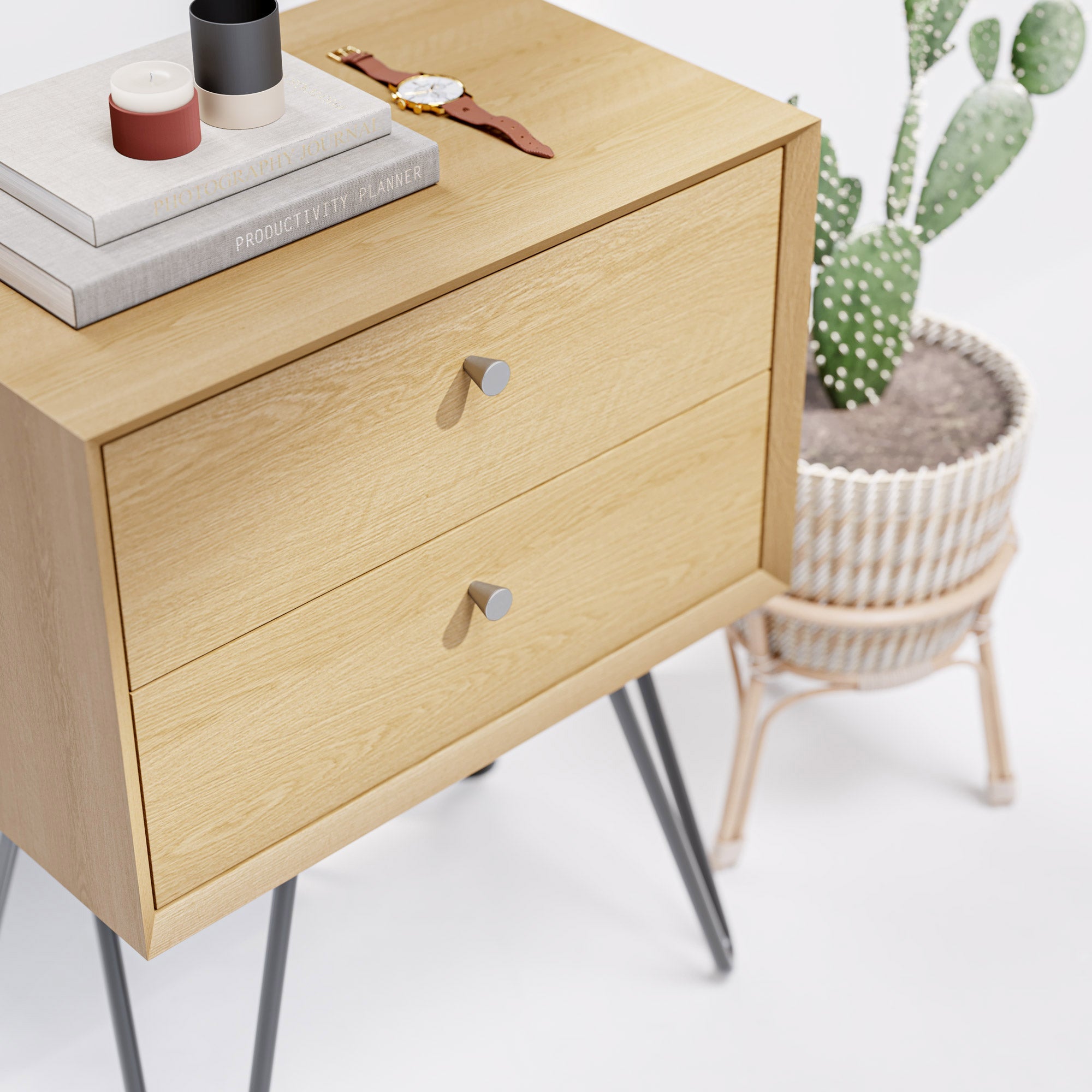
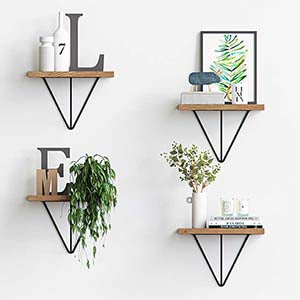
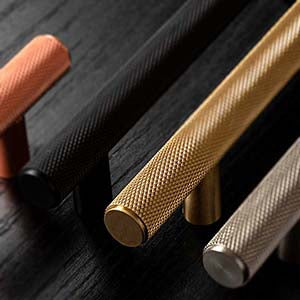
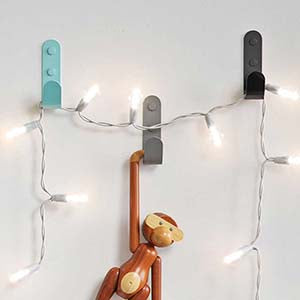
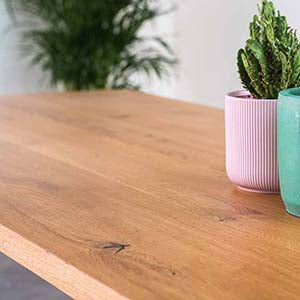
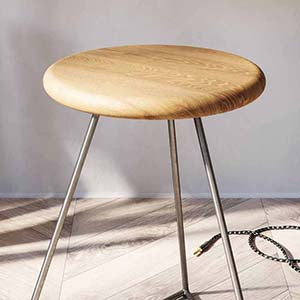
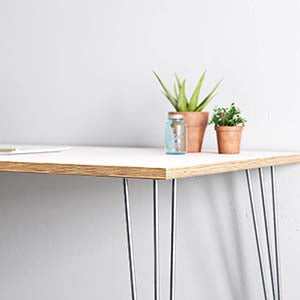
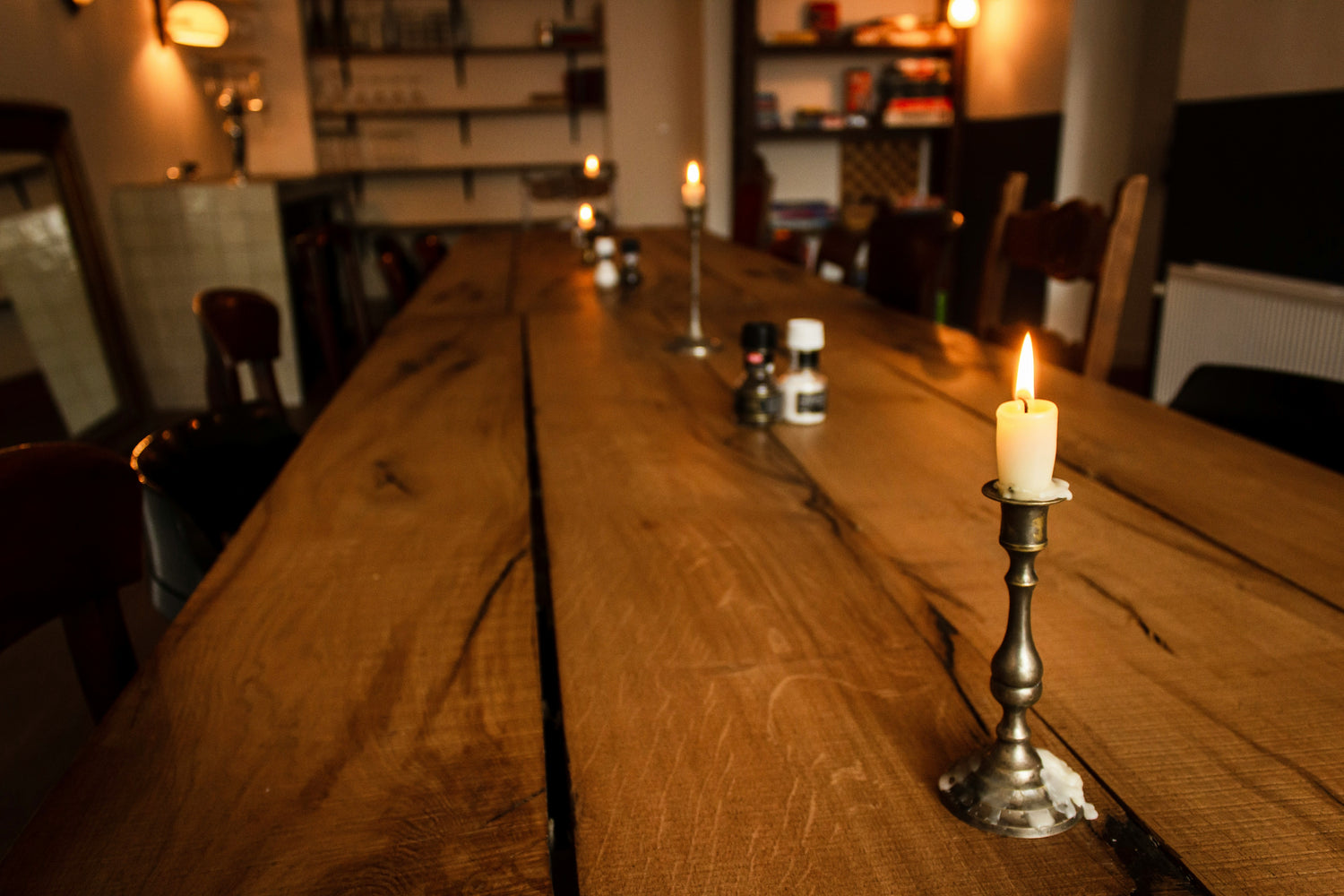
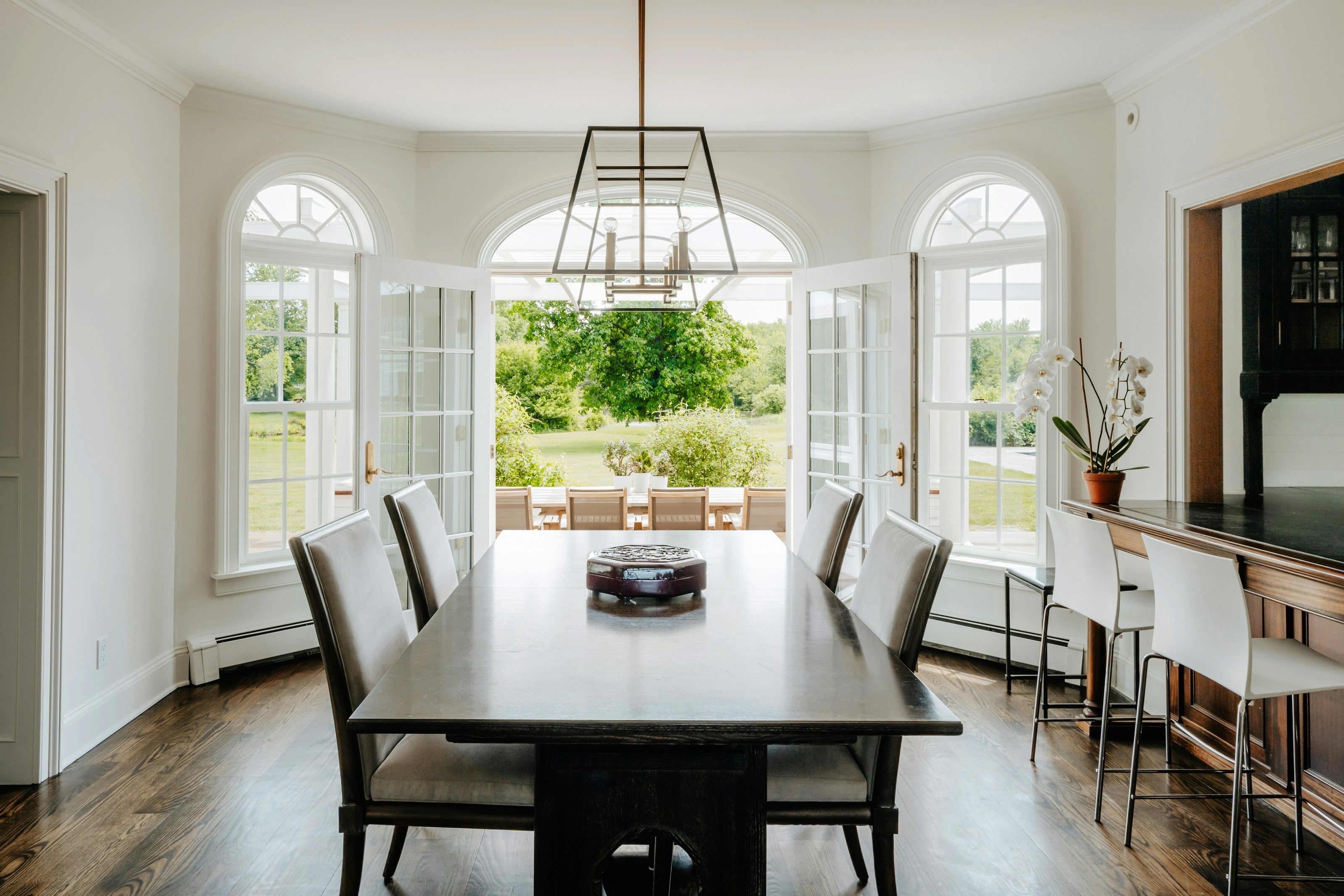

Leave a comment
This site is protected by hCaptcha and the hCaptcha Privacy Policy and Terms of Service apply.